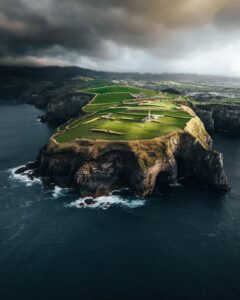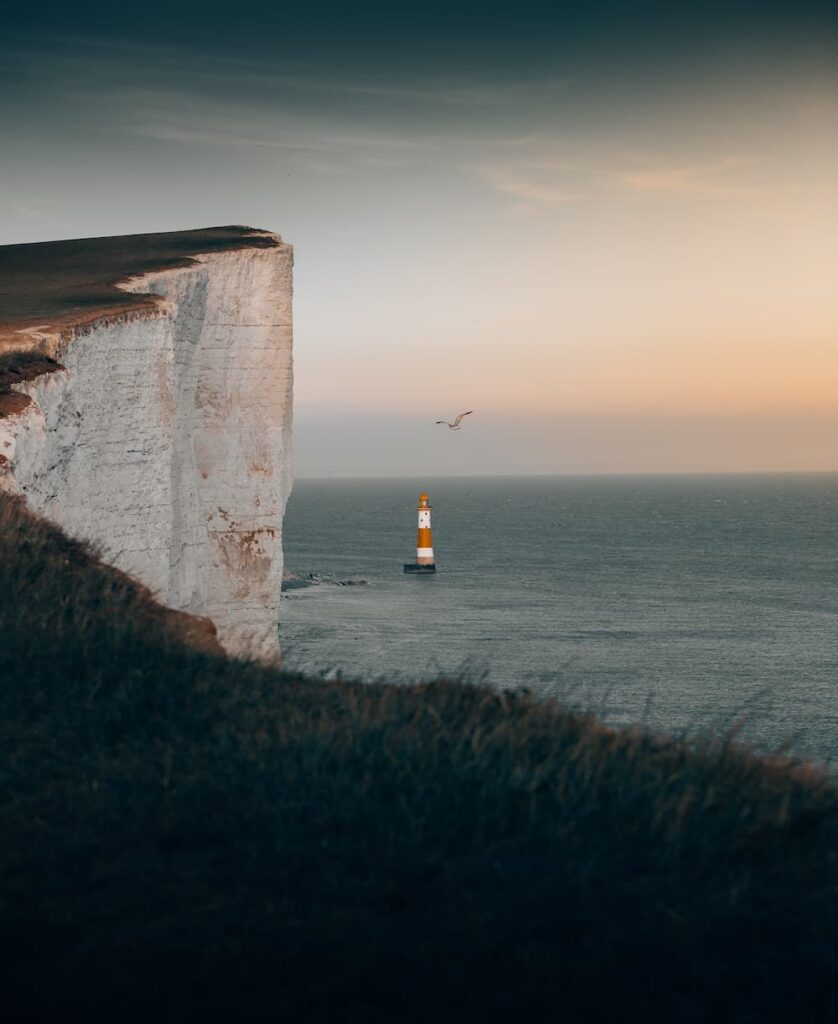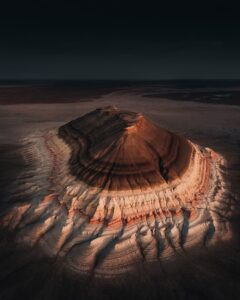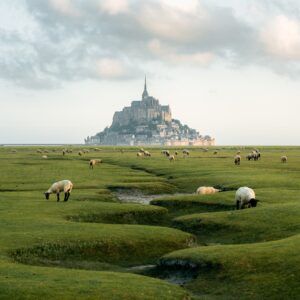
Photo tour in Azores, Portugal
Join us in the Azores for a unique photo tour, where you’ll elevate your creative skills with expert guidance from Ronald Soethje, Bruno Ázera, and Nomadict.
Philipp Pilz, an award-winning photographer and skillful visual designer, travels across Europe in a campervan searching for unique moments in nature. He generously shares his experiences and insights, covering essential ingredients for capturing great photos, four valuable lessons he has learned throughout his years of experience, the art of photo editing, and the importance of having a creative vision.
Exploring new places with my camera is a crucial aspect of my life, providing a counterbalance to my daily grind as a graphic designer. Traveling around Europe in my campervan allows me to discover hidden gems and relish in the freedom of the open road. My goal is to capture and cherish as many precious moments as possible, building a bank of cherished memories along the way.
When I first joined Instagram back in 2017, it was the prominent influencers who made the biggest impression on me. The captivating images of nature photography, featuring moody shots, misty conditions, and muted hues, sparked a fire in my soul and have continued to influence my style, even to this day.
As a result, I have had the privilege of experiencing some incredible moments, such as encountering ibexes in the Alps, spending hours lying in the sand to capture images of seals, or discovering foxes in the dunes. All these experiences have shaped who I am as a person and photographer.
In the initial years, I explored various types of photography, ranging from portraits and studio shots to macro photography. I tried different techniques like HDR, panoramic photos, long exposures, and other experimental methods. However, everything changed in 2017 when I discovered my passion for nature and wildlife photography. Instagram provided me with an ideal platform to showcase my images and interact with a community of like-minded photographers. I find great inspiration in exchanging ideas and collaborating with others in my field.
During all these years of practicing, I have collected many valuable lessons. Hereby I would like to share some that I find relevant with you:
Having high expectations can often lead to great disappointment. When I set out to explore new locations to capture photographs, I would often feel ecstatic. However, the reality was sometimes disappointing due to unsuitable weather conditions or the failure to capture the desired shots. Sometimes, it’s essential to visit the same places or animals repeatedly, requiring patience and persistence, and even multiple attempts.
“To obtain things that no one else has, you must do things that no one else does” – this quote by Benjamin Jaworskyj, a photographer and adventurer, holds a great deal of truth. There’s nothing more to add.

Take all the time you need! When it comes to editing my images, I rarely accomplish everything in a single day. Instead, I prefer to make an initial selection and return later to do several different edits. If I’m still pleased with the result after a few months, only then do I publish my work.
“Less is more.” This is why I strive to simplify things, both in life and in my photography. I adore the minimalistic style.
Research plays an integral role in my photography. Instagram has been an excellent resource for discovering most of the locations I travel to. I strive to gather every helpful detail, beginning with basics like parking locations and the direction of the sunrise and sunset during the most captivating times. The process from ideation to the final photo can sometimes take years, with several revisits to the same locations. I always explore the area to find unique perspectives, and with good luck and optimal conditions, I take my shots. Nature photography is captivating in this way – while the outcome is mostly beyond my control, I prepare as much as possible to capture stunning moments.

Furthermore, to capture a great photo, the following are four key aspects for me:
1) The location itself, especially if it features a specific object of interest such as a cabin, mountain lake, lighthouse, or shipwreck.
2) The lighting and weather conditions, which can include sunrise or sunset, fog, or other atmospheric events like storms or snowfall.
3) The composition must have an intriguing perspective that includes a foreground and a focal point.
4) Post-processing is also crucial. RAW images can be optimized using software such as Lightroom or Luminar to bring out their full potential.
I believe all this practice and experience made me a better photographer, and it is nice when your work is recognized too.
Winning the Unsplash award was a tremendous honor for me, considering it was chosen from thousands of entries. This recognition means a lot to me and has garnered significant attention for my work. My eagle image has become one of my most successful photographs with nearly 100,000 downloads and 8 million views on Unsplash, and it remains a popular image on my Instagram profile.
Despite the award’s impact on my career, my goals as a nature photographer remain the same. I seek out and explore stunning locations to create memorable photographs. However, the award’s success validates my work as a photographer, and I strive to continue improving and growing in this field.
While this image is special because of the recognition attached to it, the following images are also close to my heart:
1) The photo you see below was taken a few years ago in November, very close to my home. While hiking with my dog, I noticed a beautiful mist and the fern on the ground had a beautiful brown color. I have always loved shooting in a serially planted forest, so I chose an exciting perspective from far below to capture the imposing trees and fern in the foreground. The haze in the background added a nice mystical atmosphere to the shot. Sadly, the forest no longer exists today due to drought, storms, and beetles that affected the forest so much over the years that all the trees were cut down. This experience has taught me the importance of protecting what we hold dear.
2) The other image I would like to highlight features a young Scottish Highland cattle. It was among the first photos I captured after I started concentrating on nature photography. These animals hold a special place in my heart. They possess a serene and gentle demeanor, exuding a curious and elegant vibe. It’s challenging to articulate, but I share a deep bond with them. I frequently visit and photograph them to this day.
While such moments are special by themselves, I think post-production also plays a role in the overall outcome of a photo. And it also helps tell better a story while positioning your brand. I share below some tips and videos on editing too, hoping that you find them helpful.
For the editing process, I typically follow these steps:
1) I review and select the best image from a set of hundreds of shots.
2) I apply one of my Lightroom presets, which sets the general color look for the photo.
3) I make local adjustments and masking, lightening areas of interest and darkening other areas as needed.
4) Finally, I clean up the image and remove any distracting objects, depending on the subject.
And here are three valuable videos that describe well my color grading:
I would like to conclude this article by sharing with you some pieces of advice for amateur photographers who want to take better wildlife and nature photos.
– Begin with the basics of photography. There are countless YouTube videos and online tutorials available for beginners as well as advanced photographers.
– Change your perspective. Instead of shooting from above, try crouching or lying on the ground to capture a more intimate view of the animal. For birds, look for higher vantage points, such as hills or lookout towers, to get a better angle.
– Research the best locations to find the animals you want to photograph. Relying on luck alone is often unsuccessful.
There are still many destinations on my bucket list, and some that I have only briefly visited. The north of Scandinavia, including Lapland and the Lofoten Islands, is of particular interest to me, but these are significant journeys that require time. Therefore, my concrete goal is to create more time for myself to embark on such adventures. I hope that the next ten years will be filled with unforgettable trips and memories.

Join us in the Azores for a unique photo tour, where you’ll elevate your creative skills with expert guidance from Ronald Soethje, Bruno Ázera, and Nomadict.

In this article, Forest shares how years of chasing scale, silence, and raw landscapes shaped his approach to photography, from the deserts of Kazakhstan to the volcanic ridges of Iceland. He talks about how he uses light, texture, and vast negative space to create images that feel both intimate and overwhelming.

Simon shares the journey behind his photography, from early inspirations to field techniques, editing, and the story of the winning shot that shaped his path.

In this article, Miro shares how his love for cinematic music evolved into a deep passion for photography and how he uses light, color, and atmosphere to turn the streets of Prague into living film scenes.

In this article, Stefanie reveals how her background in physics sparked her passion for astrophotography and how she blends science with creativity to capture the beauty of the night sky. Readers will discover her approach to color, contrast, and editing, as well as her aurora photography workflow.

Spanish photographer Yhabril captures the profound connection between humans and the mountains that shaped him. Growing up in the Pyrenees, his work bridges outdoor sports, landscapes, and celestial scenes — often blending athletes, moonlight, and wilderness into striking visual stories.

In this article, Ariane shares how photography helped her navigate personal challenges, connect authentically with people and animals, and develop a philosophy rooted in empathy and artistic freedom. Readers will also discover her ethical approach to wildlife photography and her trusted equipment for both camouflage techniques and cameras.

Discover how to photograph Dutch tulip fields in their most magical light. From choosing the right gear and lenses to mastering composition, color, and aerial perspectives, this guide shares creative techniques to capture the beauty of the Netherlands’ tulips. Learn how light, color grading, and proportion bring emotion into every frame.
